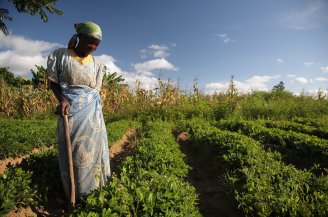
The Ethiopian Humanitarian Fund (EHF) has allocated 17 million dollars to renewed drought efforts, with major funding expected to come in next year.
The Allocation Plan for the fund is based on the Inter-Cluster Prioritization exercise, which recognizes the highest needs in nutrition, water, sanitation and hygiene, agriculture and health sectors. South and South-eastern areas are high on the priority list.
Approximately 11pc of the population in the country is experiencing food shortage and relying on government assistance. More than 600,000 individuals have been displaced due to the impact of El Niño between August 2015 and June 2016.
Now, 9.7 million Ethiopians are experiencing widespread floods, disease outbreaks, and breakdown of basic public services. Adding to this, there is a new threat that the current negative Indian Ocean Dipole may affect water availability, livestock body condition and Meher harvest performance in southern and eastern Ethiopia.
Since the recent drought outbreak, the government has bought and distributed 627,000 metric tons of wheat to the affected areas. Currently, more than 450,000 metric tons of wheat is available in the country’s reserve. Ethiopia has imported 2.6 million tonnes of wheat which is twice as much as last year.
There has been an outbreak of Acute Watery Diarrhea (AWD) following the drought in July. The recent health updates states that there are over 5,000 cases of AWD in the Oromia region. Currently, there are AWD cases being reported in Bale, East Hararghe, West Hararghe, West Arsi, Shashemene, and East Wollega. The drought can leave 9.2 million people without safe drinking water.
The EHF Advisory Board and the National Disaster Risk Management Commission (NDRMC) have given support to the fund. This year, the EHF has received funding from nine donors. The UK leads the donations with 14.5 million dollars; others include Australia, Denmark, Germany, Ireland, South Korea, Switzerland, Sweden, and United States.
After requests from the Government of Ethiopia, UNICEF has sent 60 water trucks to Oromia regions beginning in early December. Many regions in the area including Boredede, Hawi, Gudina, and East Shewa are now receiving water trucking operation. Additionally, UNICEF has provided 650,000 dollars in household water treatment chemicals to the regions in need.
This year, the food insecurity in Ethiopia has quadrupled compared to three years ago. Close to one billion dollars will be needed for drought response in Ethiopia. It is estimated that in 2017 the global need for assistance will reach a record 22.2 billion dollars.
The Ethiopia Humanitarian Fund is, according to it’s website, “a pooled fund managed by the Humanitarian Coordinator with operational support from the United Nations Office for the Coordination of Humanitarian Aid (OCHA.)”
By Mahlet Workayehu (Addis Fortune)


